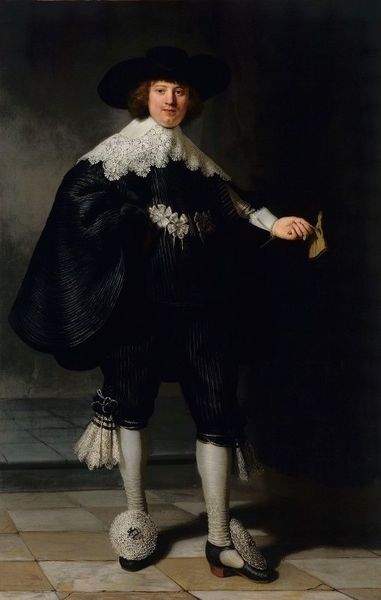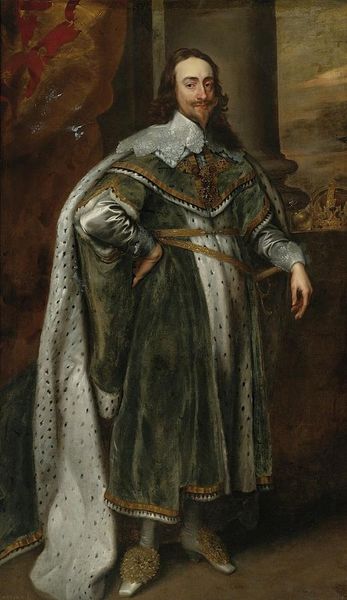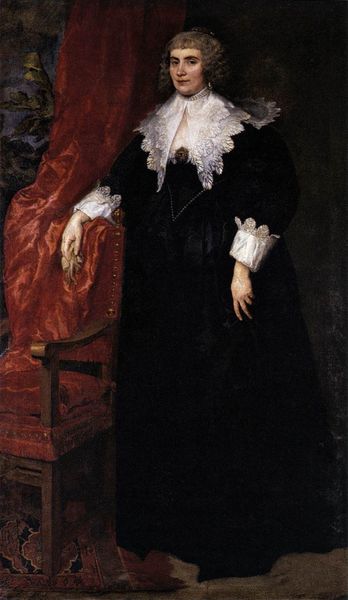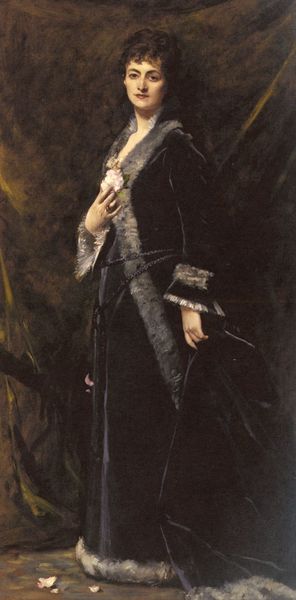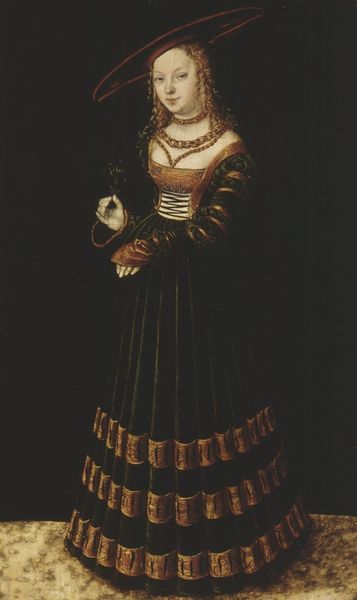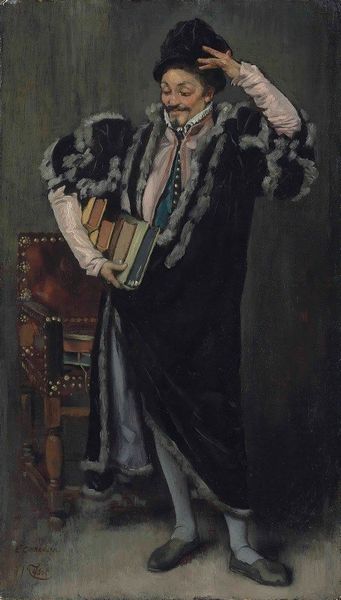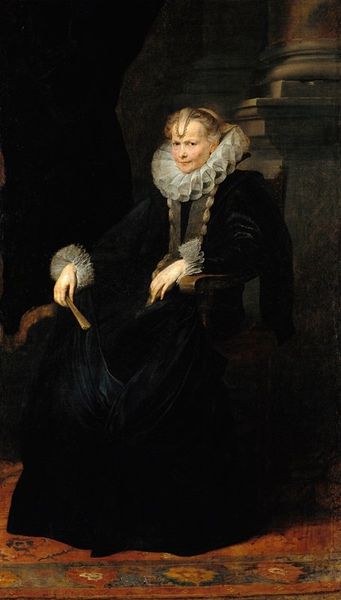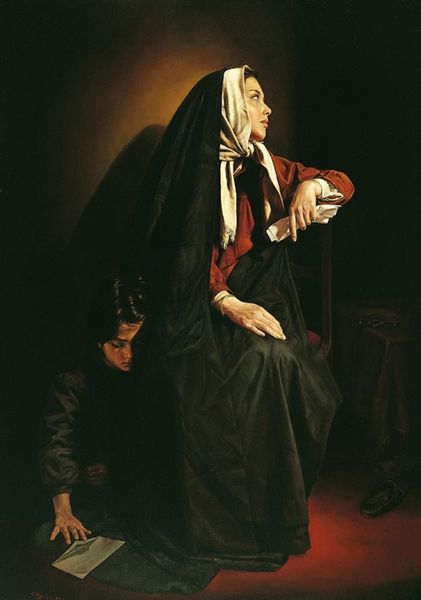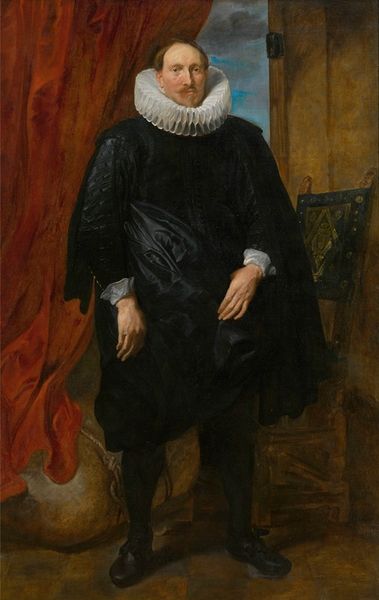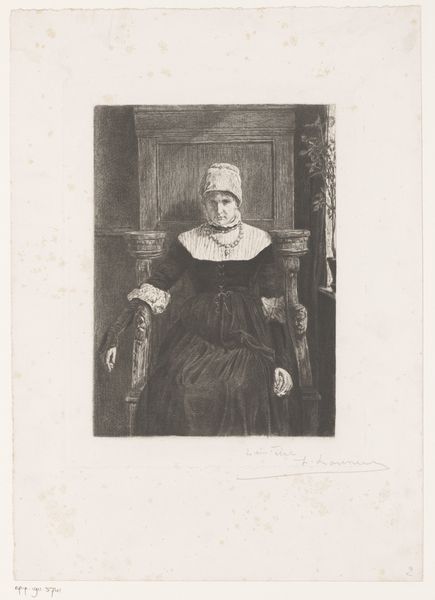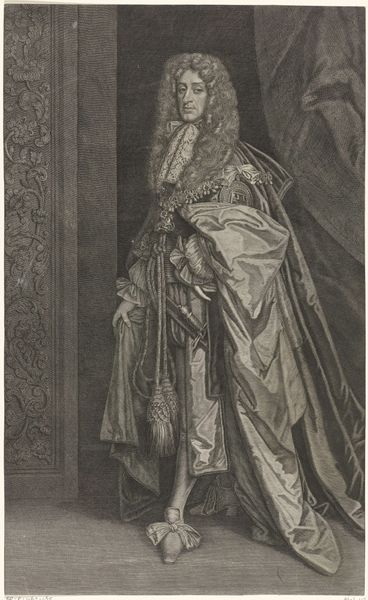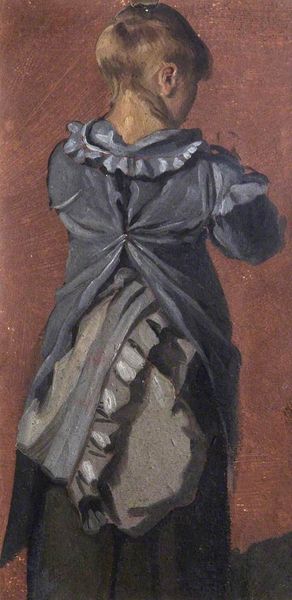
oil-paint
#
portrait
#
figurative
#
baroque
#
oil-paint
#
figuration
#
flemish
Copyright: Public Domain: Artvee
Curator: Anthony van Dyck painted this portrait of Marie de Raet in 1631, rendering her in oil on canvas with an imposing stature. What strikes you first about this piece? Editor: The somber elegance, definitely. All that dark fabric – almost swallowing her. But her face holds such a quiet dignity that persists in spite of it all. It’s masterfully composed, achieving great depth through chiaroscuro techniques characteristic of Baroque painting. Curator: Indeed, van Dyck really emphasizes her social position, doesn’t he? Notice the meticulous detailing on her lace collar and pearl necklace. These objects, along with the family crest in the upper corner, signal status, wealth and social class. They would have conveyed immediate meaning to the intended audience. Editor: Absolutely. And look how that extends beyond the individual to the symbolic, with the little dog representing fidelity and the feather fan possibly connoting modesty or coquetry depending on how she might have moved with it in daily life. I find her controlled gaze particularly interesting. She looks like she's aware of the performance implicit in having her portrait painted, carefully positioning herself within those social constructs, within art history itself, wouldn’t you say? Curator: That's a sharp observation. Her controlled demeanor definitely conveys that awareness. She embodies an almost idealised type – a representation, not just an individual. Considering van Dyck’s place in court society at that time, this portrayal speaks volumes about how he used painting to negotiate power, beauty, and reputation. I think it really illustrates the power that the portrait can hold, both personally and politically. Editor: Yes, portraits served a critical socio-political function at that time. And van Dyck's portraits particularly were important. Looking at the whole piece once again, that interplay between social symbolism, and personal agency – Marie de Raet’s quiet assertion amidst the fabric and objects - I keep getting drawn back in by her gaze. Curator: For me, understanding the layers of visual messaging, and how symbols shape narratives – makes a work like this a powerful connection to the past. Editor: Exactly. And, for me, it is also how such portraits document these conventions but perhaps offer to reflect back the changing values and understandings of ourselves.
Comments
No comments
Be the first to comment and join the conversation on the ultimate creative platform.
